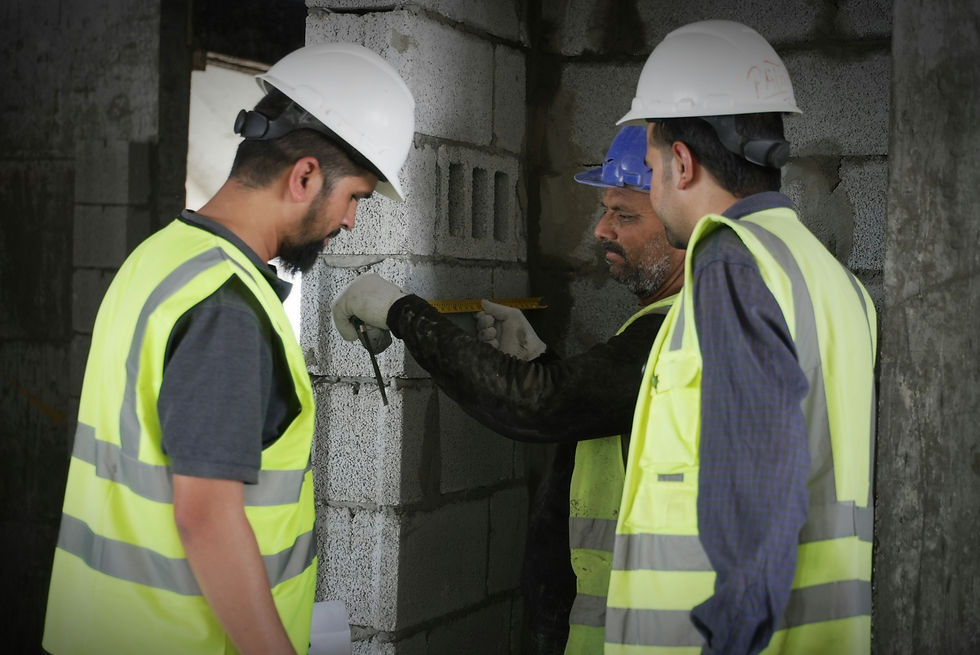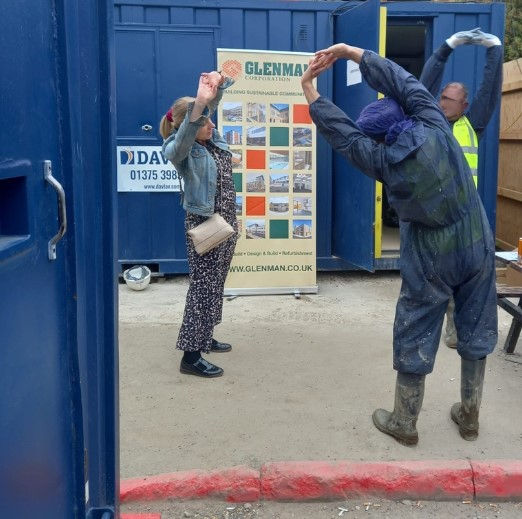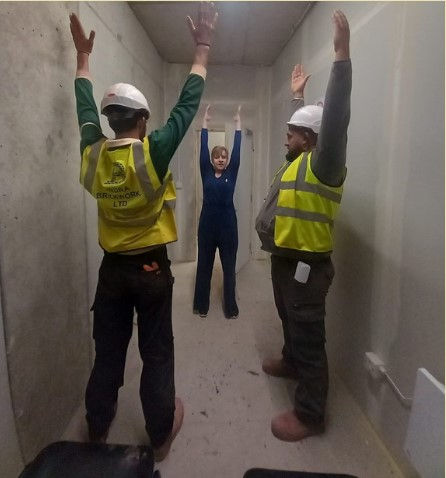Behind the Hoardings: Supporting Men’s Mental Health Where It Matters
- lizapatoux
- Jun 6
- 4 min read
Updated: Jun 19
Why is it that men are less likely to seek help for their mental health?
Statistically, the figures are sobering. In the UK, suicide is the leading cause of death for men under 50, and men account for nearly 75% of all suicides (ONS, 2023). Only 36% of NHS referrals for psychological therapies are male (NHS Digital). In the construction industry, the situation is even more acute: men in construction are nearly four times more likely to die by suicide than the national average (ONS). These are not just numbers - they represent workers on sites, valued team members and colleagues, real lives.

As a workplace wellbeing specialist, I’m often asked: how can we support mental health without being “fluffy”? What’s the real, practical way to reach men who might not be comfortable opening up or attending a lunchtime mindfulness session?
The truth is, wellbeing in male-dominated sectors like construction needs to start with realism. With deadlines, safety concerns, and an often-transient workforce, it's not enough to import a one-size-fits-all programme. The solution must work on-site, in real time, and with real people. This means flexible tools that can be delivered in minutes, require no specialist kit, and are sensitive to language and cultural differences -particularly important for a workforce that is often multinational and far from home.
This May, I had the opportunity to work with Glenman Corporation during Mental Health Awareness Month to design and deliver bite-sized wellbeing sessions across active sites. These weren't “wellbeing days” where work stops. These were micro-interventions - 5-10 minute practices delivered on break times, in porta-cabins and site offices or outdoors, and designed to reduce stress, increase energy, and build connection. Importantly, we collaborated together to test ideas and evolve them to fit in and flex with the conditions and schedules on each site.

We delivered a series of bite-sized, evidence-based wellbeing sessions across multiple construction sites in London. But this wasn’t a generic rollout. Together, we co-designed a menu of activities that worked around the realities of site life. There’s no room to be precious about rituals and woo-woo and your corporate wellbeing therapist needs to offer practical activities and be flexible enough to fit around:
Different contractors and languages
Lack of private rooms or yoga mats
Limited time and space
Varied openness to wellbeing itself
We developed two separate mini-wellbeing session offers for different roles and needs:
🔹 For management and office staff:
Simple, low-effort techniques to reduce stress, improve posture, boost energy, and support sleep - all delivered in just a few minutes during the working day. These included:
✅ Breathing Reset
To manage stress, increase focus, and regulate energy levels during the workday.
✅ Learn How to Fall Asleep in 3 Minutes
A sleep-inducing technique developed by the US Navy Seals – used by those who need to sleep in the most challenging situations and still be at the top of their game.
✅ Workplace Posture Check-in
Helps reduce musculoskeletal tension from sitting, improve energy, and prevent pain.
✅ Mini Movement & Stretching
Discreet exercises for breaking up sedentary time - ideal for office or remote workers.

🔹 For international on-site workers:
Physical, visual, and low-language practices that were easy to demo, didn’t need English fluency, and could be done on a break or during a team pause. These included:
✅ Mini Movement & Stretching
Great for reducing stiffness and physical fatigue from manual labour. Easy to follow with demonstrations.
✅ Breathing Reset
If delivered through demonstration and gesture, this can be a powerful and simple tool to reduce stress and re-energise.
✅ Grounding Ball Toss Game
A group mindfulness game using a beanbag or soft ball. Participants name something they see/hear/feel in their own language then throw the bean bag to a colleague, who then has to name something they can see/hear/feel and pass it on. The activity builds presence and a moment of calm while being fun and active.
This work built on the themes I explored last year in my article: “Do Yoga and Bananas Make a Difference to the Workplace?” Spoiler alert - not unless the culture supports it. Wellbeing must be part of the day-to-day language of leadership, not a bolt-on.
Here’s what I learned from spending time on construction sites:
Community is paramount. A shared activity - even something as simple as a stretch or breathing game - can break isolation, build morale, and remind workers they’re not alone.
Foremen are key. Often multilingual and deeply trusted, they’re the ideal bridge between initiative and uptake. Engaging them early boosts buy-in and helps get messages across.
Managers set the tone. When wellbeing is championed by project managers, site leads and HR, it stops being seen as a nice-to-have and starts being woven into site culture.
Signposting matters. Normalising access to EAPs, helplines, or a point person on-site makes a huge difference. If you only do one thing - make it easy to know who to talk to and where to go.
If you’re a leader, manager, or HR professional looking to build a healthier, more resilient culture - especially in high-pressure, operational environments – it’s important that workplace wellbeing is more than box-ticking.
Let’s talk about what actually works: small, practical changes that meet people where they are. If you're curious about how to make wellbeing feel doable, relevant and respected in your workplace - I’d love to hear from you.















